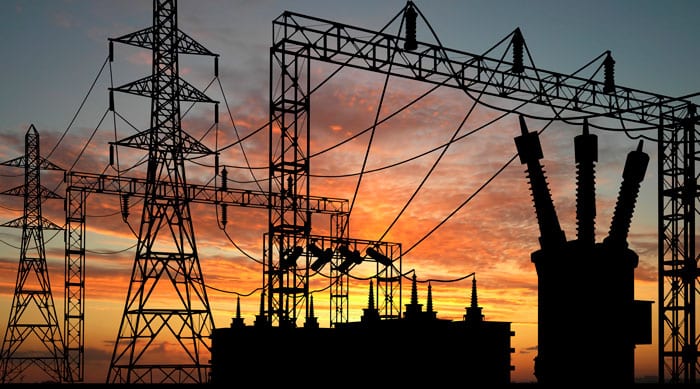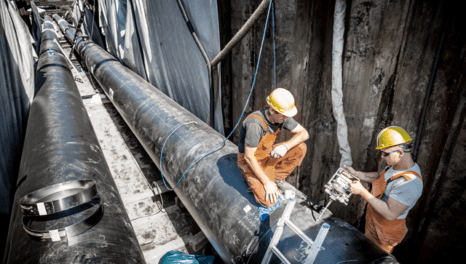Development of the future energy system – addressing the emerging barriers
The established GB electricity system is facing a period of unprecedented change in terms of the mix and location of generation technologies, the anticipated new demands placed on the system by electrification of heat and transport, and the expected growth of new 'beyond the meter' technologies and services.
26th April 2017 by Networks

Analysis has shown that the combined effect of these changes will be to create significant new challenges for the design and day-to-day management of the national electricity power system.
In the first phase of the Future Power System Architecture (FPSA) project, 35 new or extended functions were identified, essential to the ongoing security and development of the power sector.
The team delivering activity as part of Work Package 3 is tasked with identifying obstacles likely to impact implementation of the 35 functions, and the consequences of the new functions not being available.
The Future Power System Architecture programme has already identified 35 new or extended functions that will be required to ensure the continued security and stability of the electricity power system whilst delivering low carbon energy in the most affordable way.
Three examples of the new or extended functions with overlapping requirements are:
- Enabling the cost-effective connection and integration of new types of demand (such as EV charging), generation (such as solar PV arrays) and energy storage devices (such as batteries) through smart active management and communications systems which will exploit the inherent flexibility of these technologies to help relieve capacity constraints on electricity networks and maintain the security and stability of the wider power system.
- Enabling secure and open data exchange for all sector parties – including both traditional parties (such as Suppliers, DNOs and the GBSO) and new parties (such as aggregators and providers of intelligent home devices) – whose systems and services require the secure sharing of information and a common requirement for access to open data protocols and coordinated data management structures.
- Identifying and designing-out emerging new threats to the power system arising from the expansion of highly distributed communications, control and data management systems giving rise to increased opportunities for unauthorised access to data, cyber attacks, and potential shocks to the system from uncoordinated control actions leading to demand step-changes.
However, there are currently obstacles to performing these and other new or extended functions. The barriers vary in nature and include: technical limitations of the current infrastructure; commercial and market framework barriers; governance issues surrounding change-control mechanisms, policy, regulation and industry codes. There are also societal considerations that may impede the accommodation of new parties and establishing more energy-engaged customers. Identifying these obstacles is a key aspect of the FPSA2 project as it determines the actions that need to be taken and the sector parties who need to be involved.
Work Package (WP) 3 of the FPSA2 project is charged with identifying the current obstacles to performing the 35 functions, and also understanding the consequences of failing to unlock the required functionality in terms of the implied threat to delivering secure, affordable and sustainable electrical energy.
To do this, the WP3 team carefully analyse each of the 35 functions and assess the materiality of each of the current barriers – taking into account evidence from stakeholders and from research into future customers‘ needs from Work Packages WP1a and WP1b: in other words, the specific issues that would prevent the functions being performed, and the difficulty that is likely to be encountered in addressing those issues. There might typically be ten or more specific issues identified as being problematic for any given function. In order to compare the materiality of the identified issues, both within and between functions, a scoring methodology has been applied. Difficulty is ‘scored’ as high, moderate or low by objectively considering the degree of change required and the capability of the sector to instigate the required changes under the current organisational structures and change-governance arrangements of the sector.
As well as considering difficulty, the team also analyse the consequences of failing to deliver the functionality, or delivering it late. Again, there might typically be five or more identified consequences of failing to deliver functionality, and materiality is assessed through scoring each of the consequences as high, moderate or low.
By considering both the difficulty and consequence scores for each function an overall ‘risk’ score for that function can be derived. Once the exercise is completed for all 35 functions it is then possible to derive two important outputs:
- the relative importance of addressing barriers to each of the 35 functions in terms of the risk they present to addressing the development of the future electricity power system, and to resolving the energy trilemma and;
- the barriers that most commonly impede the delivery of new functionality.
These numerical outputs are complementary to the detailed description of each of the barriers.
Examples of barriers that most commonly impede delivery of important functions include:
- limitations in the current technical capability of the power system and existing market mechanisms to integrate, and fully exploit the flexibility of, low carbon generation, demand and energy storage to moderate peak power flows and demand step changes, and help reduce shocks to the power system;
- technical challenges to implementation of agreed open data protocols and models for data management and data communication, which could result in bespoke, non-scalable ‘point to point’ solutions that do not lend themselves to a whole-system approach to data and cyber security.
Either of these two examples of barriers could prevent or delay the delivery of the three example functions described above, meaning that decarbonisation of generation, heat and transport might be delayed or the security of the system could be compromised. WP3 will enable prioritisation of the functions and barriers to be addressed by Work Package 4, which is tasked with defining how future system functionality could be implemented more effectively by using (what we are calling) ‘Enabling Frameworks’ that will help overcome or bypass barriers to functionality and meet the evolving needs of the power system in a rapidly changing landscape. More details on WP4 will be available in a future blog.
Comments
Login on register to comment
Related content

Heat
Electric storage heating – a Cinderella solution
Why has electric storage heating been overlooked as we seek to tackle decarbonising domestic heat?

Heat
Prospects bright for landmark East London Heat Network
New Vattenfall-Cory partnership marks step towards record-breaking heat network capable of serving over 10,000 homes

Heat
New construction director at Switch2 Energy
Appointee brings experience from Vattenfall and Eon
Related supplier content
![‘Learning by doing’ on the road to net zero [test product]](https://networksonline.s3.amazonaws.com/products/images/3.jpg)
People & Skills
‘Learning by doing’ on the road to net zero [test product]
DSO director Andrew Roper discusses 'Learning by doing'

Power
Load patterns and lockdown: how Covid-19 is impacting electricity networks
Insights into dynamics on the low voltage network as the outbreak unfolds

Heat
How E.ON. is helping the City of London become a zero emissions city
Discover Citigen. Deep in the heart of our bustling capital